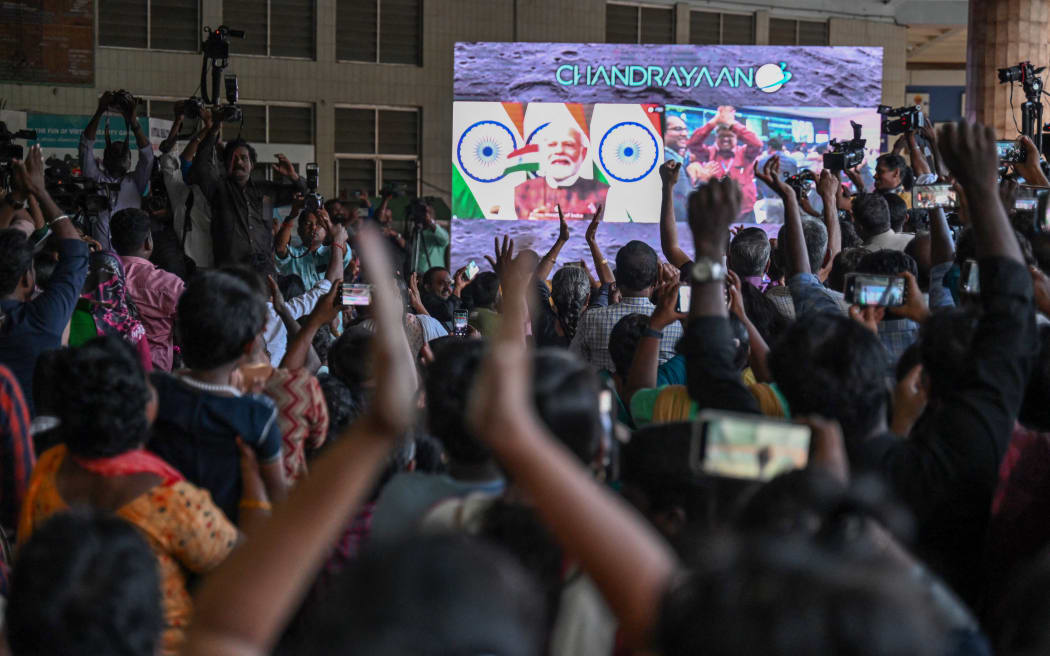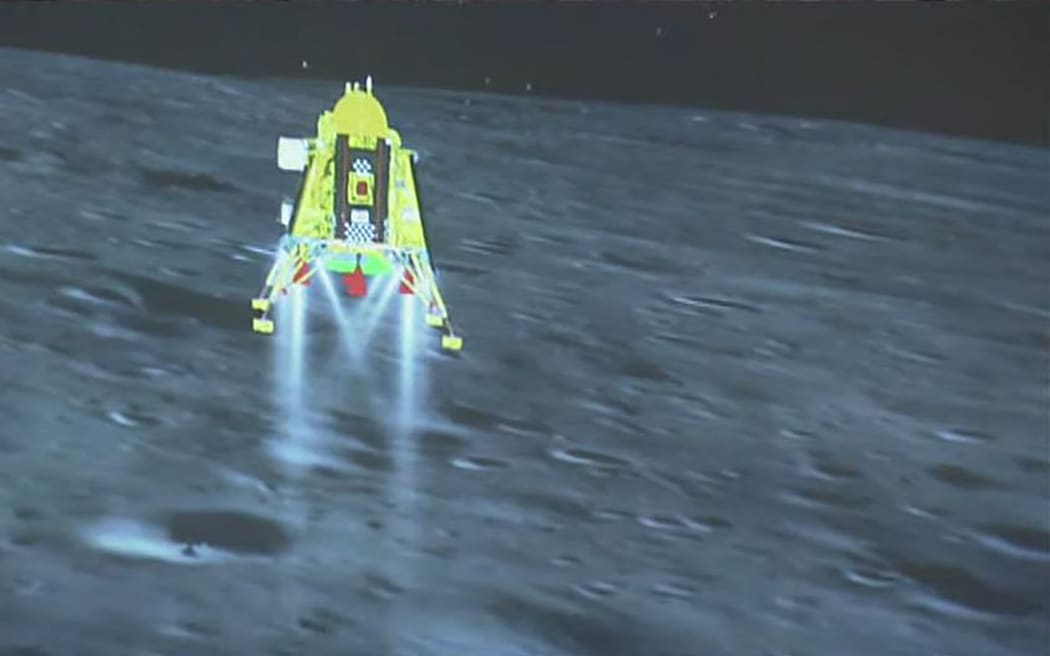There were wild celebrations from Indian people around the world when it became the first nation to stage a successful landing at the south pole of the Moon. But there's nothing new about India's 'high-science, low-cost' space programme.

People in Chennai celebrate the successful lunar landing of Chandrayaan-3 spacecraft on the south pole of the moon Photo: AFP
India has made history in becoming the first nation to land on the Moon's south pole – and it's a big deal for what is now the world's most populous nation.
Journalist Gaurav Sharma covers Indian and South Asian news for RNZ Asia.
Now based in Auckland, he's from the city of Bhopal in India, and says like the rest of the community, he's full of pride.
"As an Indian, it's such a great achievement because lots of people in the West feel that India is still a country of snake charmers and elephants," he tells The Detail.
Despite some commentators referring to India's space industry as nascent, he strongly disputes this.
"It has been in place since [the] 1960s ... straight away the government at that time realised we are a poor country and we need to go to space to initiate all the development programmes.
"India had its first satellite in space 1975 and we are in 2023. In these so many years, India has launched almost 90 satellites."
But it's being done for much less than other nations spend on their space programmes.
"When it started in [the] 1960s, India used this phrase: 'high-science, low-cost'. The successful lunar mission that India achieved... the total cost of the entire mission is US$75 million. If you look at a few space-related Hollywood movies like Gravity, the budget was $100 million," Sharma says.
In comparison, NASA's Artemis missions are expected to cost about $93 billion.
Sharma also talks to The Detail about a New Zealand company which helped out with India's mission, Auckland-based technology company Rakon.
They build high-reliability space oscillators, used in atomic clocks on satellites which help with navigation and timing.
Dr Nick Rattenbury, a senior lecturer in astrophysics at the University of Auckland explains the ins and outs of the mission.

The Chandrayaan-3 spacecraft seconds before its successful lunar landing on the south pole of the Moon. Photo: AFP / Handout / Indian Space Research Organisation (ISRO)
"There's a lander which is about the size of an SUV that soft-landed on the moon, as opposed to hard-landed or otherwise crashed," he says.
"It touched down near the lunar south pole and on the lander are a number of experiments, including a little rover – a 26 kilogram robotic car with its own experiments, which descended and is now on the surface of the Moon.
"There's nobody present on the surface of the Moon at the moment. It's all been remotely controlled from operators on Earth."
So what is so significant about landing on the south pole?
"The south pole of the Moon has been a region of intense observation and analysis for quite some decades," Rattenbury says.
"In the south polar regions of the Moon, there appears to be a larger concentration of water ice on the surface.
"That water is important for a number of reasons. There is a world-wide push towards returning humans to the surface of the Moon for exploration purposes and scientific purposes and water is necessary for sustaining human life.
"You have two choices: you can either bring the water with you or you can find it on the place where you're going. Water is heavy and it takes up space, so if you have to pack all the water that you need for your space mission, that means you need to have the room in your rocket, and the rocket has to be bigger because it's carrying more weight. That adds to the expense and complexity of the mission.
"It would be much better if you knew that there was going to be this heavy, extremely vital, valuable resource at the place that you are going.''
Rattenbury says the worldwide space race is "heating up".
"It is extraordinarily difficult to sustain human life in space [or] a very hostile environment like the Moon or Mars. So to demonstrate your capability in doing that has great prestige, it demonstrates that you are operating at the top of your game ... a number of nations are keen to demonstrate their technical supremacy."
Find out more by listening to the full episode.
Check out how to listen to and follow The Detail here.
You can also stay up-to-date by liking us on Facebook or following us on Twitter.

Photo:


